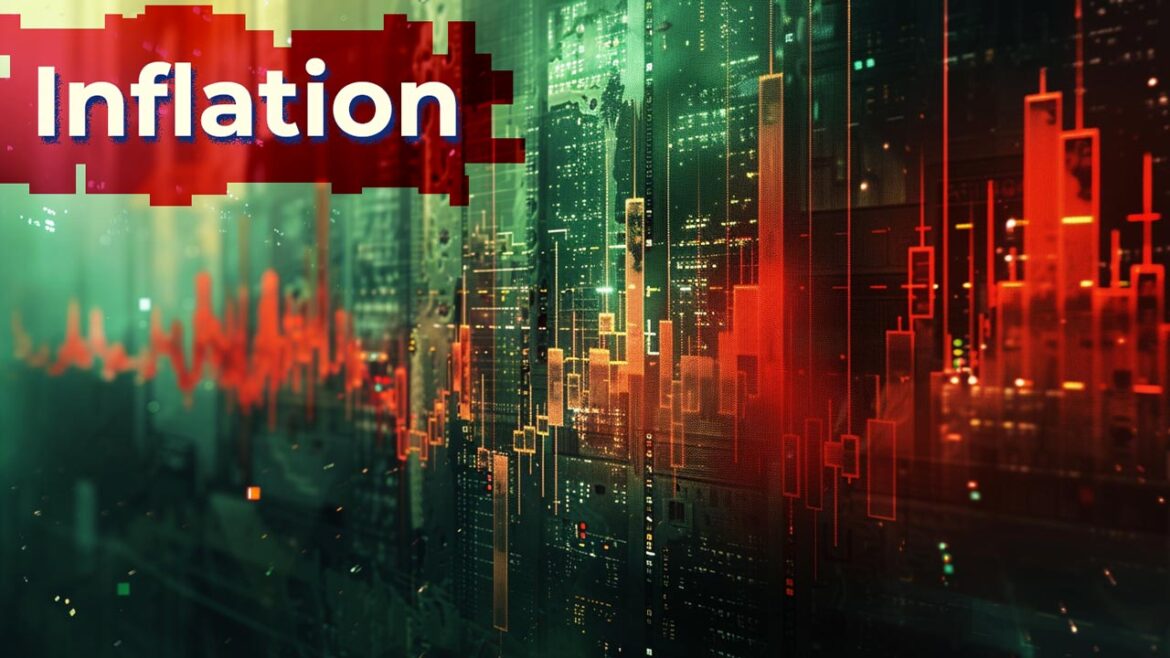Precious metals are apparently waking up. And here is where you can find the best deals.
Site:
Precious metals news
In a significant escalation, Ukraine launched a large-scale assault on Russian territory, deploying dozens of drones and rockets to strike a major oil refinery and other critical infrastructure, marking a bold attempt to challenge Russia's land borders. This attack, part of the ongoing conflict that has seen both nations utilize drones for strategic hits against military and infrastructure targets, caused considerable damage to Lukoil's NORSI refinery among others. This move comes amid a series of Ukrainian strikes on Russian energy facilities and refineries, underlining the intensifying tactics in the more than two-year war between the two countries.
The U.S. government's budget deficit ballooned in February, driven by a significant increase in spending due to the tax refund season and escalating interest costs on the national debt, according to the U.S. Treasury Department. The deficit reached $296 billion for the month, marking a 13% increase from February 2023's $262 billion gap. This uptick comes as expenditures hit a record $567 billion for February, a jump of 8%, while income rose modestly by 3% to $271 billion. This development slightly surpassed economists' forecasts, who had anticipated a $299 billion deficit.
As central banks are amassing gold, South Korea's reserve bank remains noticeably inactive, holding its gold reserves constant at 104.4 tons since 2013. This inaction comes at a time when, according to the World Gold Council, global central banks have significantly increased their gold holdings, adding 39 tons in January alone. This continues the trend of heavy gold acquisitions, with over 2,000 tons purchased in the past two years.
This analysis takes the BLS inflation data and recalculates the percentage changes at the category level to get unrounded numbers. The total number ties to the BLS, but it gives more detail at the granular level.
Mar 12, 2024 - 13:38:23 PDT
The BRICS bloc, comprising Brazil, Russia, India, China, and South Africa, is on a notable path of expansion and de-dollarization, raising concerns for the United States and the European Union. After welcoming several new members in January 2024, BRICS plans to extend further invitations within the year, signaling its growing influence and appeal. This expansion is part of a broader strategy to reduce dependency on the US dollar, with the bloc and its new members moving towards settling trades using their local currencies. Such moves are indicative of BRICS's commitment to de-dollarization, demonstrated by India, China, Russia, and the UAE's shift away from the greenback in their transactions. This evolving dynamic presents a potential challenge to the dominance of the US dollar in global trade and could reshape international economic relations.
 Economists Question the Recession-Predicting Power of the Inverted Yield Curve
Economists Question the Recession-Predicting Power of the Inverted Yield CurveMar 12, 2024 - 13:01:40 PDT
The inverted yield curve, historically a harbinger of recessions, is losing its clout as a predictive tool, suggest the insights from a recent Reuters poll of market strategists. Traditionally, a negative spread between 2-year and 10-year U.S. Treasury yields has been viewed as a strong indicator of impending economic downturns, with a near-perfect track record since 1955, failing only once. However, despite an inversion lasting over 20 months and a current discrepancy of 46 basis points, the conversation among experts has shifted towards a lesser likelihood of a recession or even potential economic growth.
The latest inflation data reveals a mixed bag for American consumers, who have been grappling with rising costs for nearly two years. According to the Labor Department's February update, the Consumer Price Index (CPI)—which tracks the prices of a wide array of everyday items such as groceries, gasoline, and rent—rose by 0.4% from January and was 3.2% higher than the same time last year. Although this marks a slight deceleration from December's 3.4% inflation rate, it still exceeds the Federal Reserve's ideal target of 2%.
Gold's recent rally has left some analysts puzzled, as the precious metal soared 7% in just over a week to achieve new record highs, surpassing the $2,195 per troy ounce mark. This surge has defied traditional market explanations, especially since it occurred amidst expectations of US interest rate cuts, which typically enhance the appeal of non-yielding assets like gold. Analysts like Nicky Shiels of MKS Pamp, describe the rally as "the quietest, most confusing" with the jump from $2,000 to over $2,150 being particularly baffling...
Economists at Commerzbank project that gold prices are expected to stay robust, influenced by consistent buying from the People's Bank of China (PBoC), which has been increasing its gold reserves for 16 consecutive months. In February alone, the PBoC added approximately 390 thousand ounces of gold, equivalent to 12 tons, to its reserves.
On Sunday, Peter recapped a stellar week for gold. He also provided an analysis of President Biden’s State of the Union Address and criticized Fed Chair Jerome Powell’s perspective on the economy.
With President Biden’s Saving on a Valuable Education (SAVE) plan set to extend more student loan relief to borrowers this summer, the federal government is pretending it can wave a magic wand to make debts disappear. But the truth of student debt “relief” is that they’re simply shifting the burden to everyone else, robbing Peter to pay Paul and funneling more steam into an inflation pressure cooker that’s already set to burst.
Bitcoin continues to flirt with its highest-ever values, driven by a surge in investment into cryptocurrency markets and anticipation of a decrease in the rate at which new bitcoins are created. On Monday, Bitcoin reached a new zenith, nearing $72,881, and maintained a price around $71,780 by Tuesday morning in New York. This impressive performance is part of a broader trend in which a record $2.7 billion was invested into cryptocurrencies just last week, with Bitcoin receiving the lion's share of this influx, as reported by CoinShares International Ltd.
Mar 12, 2024 - 06:45:13 PDT
Gold prices saw a slight decrease in Asian markets on Tuesday, pulling back from their recent record-breaking highs as investors decided to cash in on their gains. The anticipation of interest rate reductions as early as June, combined with a spike in demand for safe-haven assets, had propelled gold to new heights in March, nearly reaching $2,200 an ounce. Gold has dipped slightly, with spot gold dropping to $2,178.43 an ounce and gold futures for April also decreasing by 0.2% to $2,184.65 an ounce, both trading around $15 short of the previous week's peak prices.
In February, the consumer price index (CPI) saw a 0.4% increase from the previous month and has risen 3.2% over the past year, according to the Labor Department's Bureau of Labor Statistics. These figures were generally expected, though the yearly increase slightly surpassed predictions, indicating a steady but slightly accelerated inflation rate. When looking at core CPI, which excludes the more unpredictable food and energy sectors, there was also a 0.4% monthly increase and a 3.8% rise year-over-year, both slightly higher than anticipated.
 SURGING COSTS & CAPEX TOP GOLD MINERS Q4 2023 UPDATE: Declining Production, Rising CAPEX & Costs Impacting Mining...
SURGING COSTS & CAPEX TOP GOLD MINERS Q4 2023 UPDATE: Declining Production, Rising CAPEX & Costs Impacting Mining...March 12, 2024
Something very "Troubling" is taking place in the heart of the Gold Mining Industry. Unfortunately, most mining analysts don't quite understand what is happening. Even the CEOs of these top gold mining companies are now being forced to make big changes as "Costs and CAPEX spending" surge higher...
With a stunning trillion dollars added to the national debt in only three months, projected to reach an incomprehensible $54 trillion within 10 years, and America’s interest payments on track to exceed defense spending next year, the question must be asked: How much longer can the debt bubble go?
Oil prices remained relatively stable, with Western Texas Intermediate futures slightly declining to close just below $78 per barrel, after experiencing the lowest intraday price in two weeks. This cautious market movement comes as investors await US inflation data, which, if higher than anticipated, could complicate the Federal Reserve's monetary policy decisions. Additionally, key oil market reports from the International Energy Agency (IEA), the Organization of the Petroleum Exporting Countries (OPEC), and the US are expected to be released this week, potentially influencing future oil price trajectories.
Mar 11, 2024 - 12:48:58 PDT
The International Jewellery Show and the International Diamond, Gem & Pearl Show, collectively attracted over 80,000 buyers from across the globe, showcasing over 4,000 exhibitors from 44 different countries and regions. Held at two distinct venues, these shows marked the successful resurgence of the Hong Kong Trade Development Council's "two shows, two venues" format, a first since the onset of the pandemic. The Diamond, Gem & Pearl Show welcomed over 31,000 buyers from 125 countries, whereas the Jewellery Show saw more than 49,000 attendees from 132 countries, demonstrating the international appeal and significance of these exhibitions in the jewellery industry.
In light of shifting monetary policy expectations, gold prices have soared, nearly touching the $2,200 per ounce mark. This recent surge, culminating in almost a 5% increase last week alone, has been propelled by a series of record highs over four consecutive sessions. The unexpected rise in the U.S. jobless rate has fueled speculation that the Federal Reserve may lean towards a more accommodative monetary policy, which in turn has weakened the dollar and reduced 10-year Treasury yields, further elevating gold's allure. This rally has also resulted in the highest level of net speculative bullish bets on gold in two months, indicating a strong investor confidence in the metal as a valuable hedge in times of economic unpredictability.
 Defying Expectations: Gold's Rally in a Strong Economic and Stock Market Environment
Defying Expectations: Gold's Rally in a Strong Economic and Stock Market EnvironmentMar 11, 2024 - 12:33:25 PDT
Despite a strong U.S. economy, soaring stock indexes, and record prices for riskier assets like bitcoin, gold continues to shine, reaching a historic high of $2,195 per ounce. This remarkable ascent, marking a 5% increase year-to-date and a 19% rise over 12 months, aligns unexpectedly with the performance of major American stock indexes, such as the S&P 500. Typically seen as a refuge during economic turmoil, gold's surge defies traditional patterns observed during past crises like the financial meltdown of the late 2000s and the COVID-19 pandemic. This anomaly suggests that investors may be seeking a hedge against potential market volatility or diversifying their portfolios amidst seemingly stable economic conditions.








